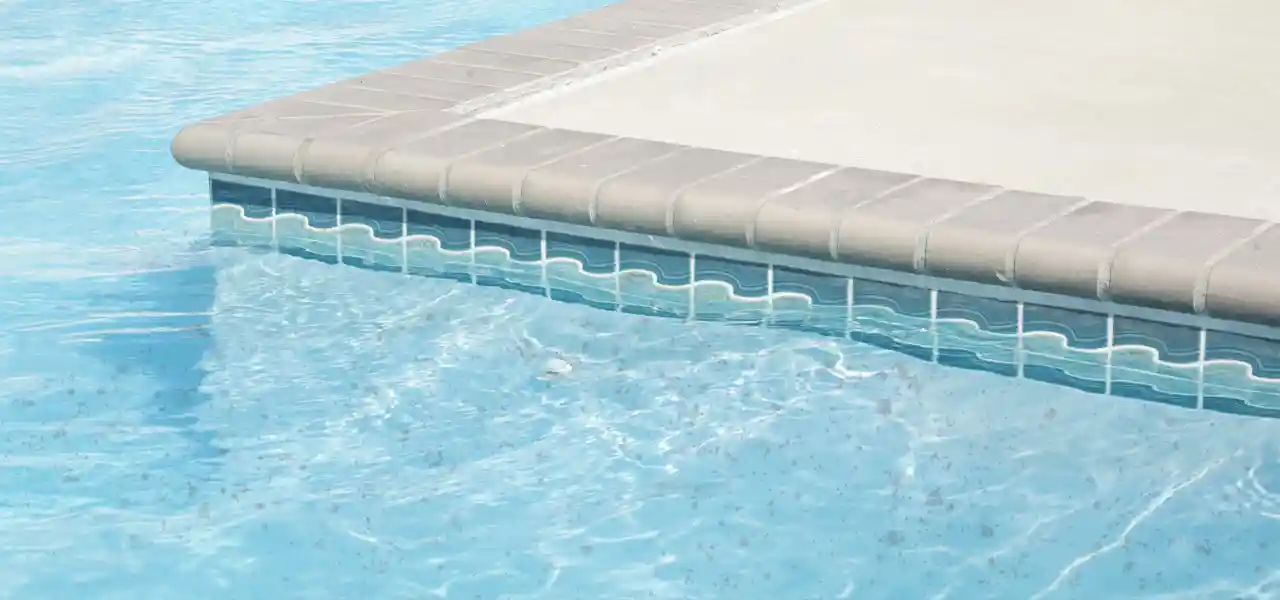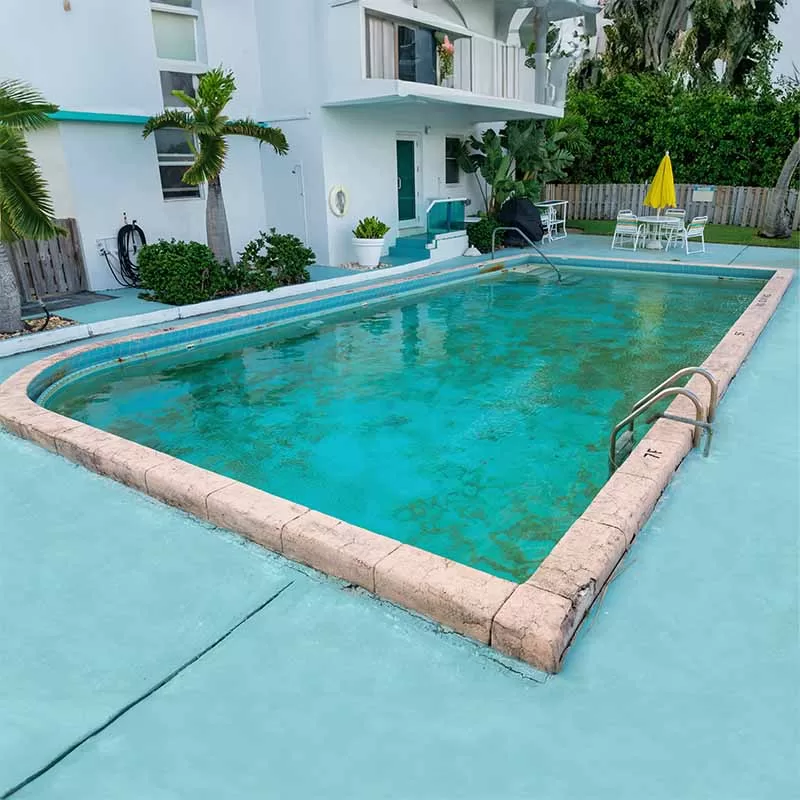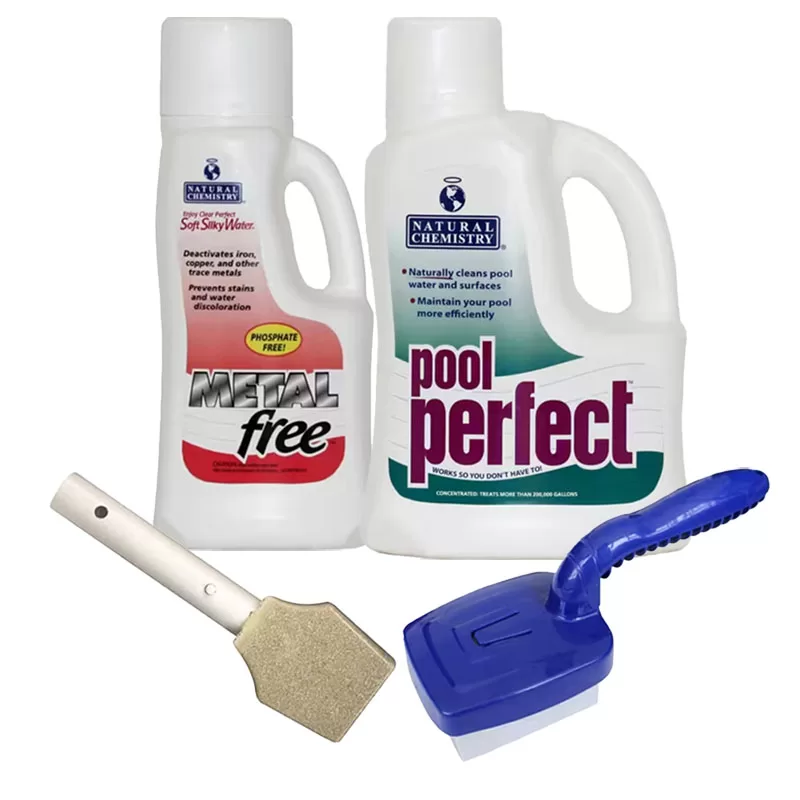FREE Standard Shipping On All Orders $100 or More!*

Stain Removal in a Plaster Pool
If you own a concrete or plaster swimming pool, or are about to become the proud owner of a plaster-surfaced pool, we have some pointers to help you keep it looking like paradise. Plaster pool finishes are traditionally the most popular swimming pools dating all the way back to the very first backyard pools. Typically a mixture of cement and fine, crushed marble sand, otherwise known as marcite, it's a durable resistant surface.
Perhaps best of all, they can be sculpted into almost any shape your budget can afford. Additionally, gunite pools are very sturdy and strong because of the steel framework.
How to Identify and Remove Stains in a Plaster Pool

Invisible metals dissolved in your pool water from sources like rain run-off, pool equipment, saltwater pool systems, or even your concrete pool deck surface. Bits of metal like screws or hair pins can make a nasty rust stain.
A great product for removing metal from your pool is Metal-Free by Natural Chemistry. It is one of the strongest products available for sequestering metals. It works especially well on well water, is not affected by pH or temperature, and is all natural. The Sapphire Stuff by Jack’s Magic is another fantastic sequestering agent. It not only removes metals, but also oils, soaps, cosmetics and other organic matter from your pool water.
For oily stains at the waterline, or a bathtub ring from winterization water levels, use an enzyme product like Pool Perfect to consume oils, fats and other greasy pollutants that enter the water.
Identifying Plaster Pool Stains
It’s important to know what kinds of metals are creating the stains in your pool. Here's a pool stain chart as a guide for metal stain identification in pools:
| Metal | Sources | Colors |
|---|---|---|
| Calcium | Plaster, grout, mortar, or cal-hypo shock | White crystals or precipitate |
| Copper | Copper algaecides, ionizers, corrosion of copper pipes, fittings, or heat exchanger | Blue, green, blue/green, black, or teal |
| Iron | Well water, corrosion of iron pipes or fittings | Dark red, brown, grey, black, or green |
| Manganese | Well water | Pink, red, or black |
Removing Plaster Pool Stains
Metals are certainly not the only cause of stains in a plaster-surfaced swimming pool. Leaves, berries, bugs, sun tan oil, or even your water-loving dog can all contribute to staining. These types of stains can be cleaned with good old fashion elbow grease using a combination of a pumice stone and pool shock. Pouring a bit of pool shock directly onto a stain works similar to bleach and is ideal for plaster surfaces, but a bit harsh for vinyl liners.

The Stain Eraser is another great stain removal product that does not require the use of chemicals and is great for smaller stains and stains in tough corners. It’s designed to be mildly abrasive so it’s tough but not destructive to the plaster.
For extreme staining or serious algae blooms, plaster pools can be cleaned with an acid wash with muriatic acid, or the safer to use Acid Magic. Acid washing removes a thin layer of plaster, exposing bright white and unstained plaster underneath. Having your pool acid washed will remove most surface stains.
Finally, keep your pool water balanced, with good pH, alkalinity and calcium hardness levels. A pool that is out of balance can stain more easily, and makes stain removal difficult as well.
For plaster pool stains, it's best to always start with the brushing and shock before going in with a bunch of trial and error stain removers. With staining, patience is a virtue. If you have balanced the water, brushed and shocked, and you still find staining, then try one of our pool stain removal chemicals.
Other Stains
These can include pool stains from mineral scale like calcium and metals like copper, iron or manganese. Minerals can come out of solution in hard water, and metals can enter from fill water that is high in metals, or from copper pipes or a pool heater exchanger – when water balance is not correct.
Poor water balance can become corrosive or scaling, and both conditions can cause plaster pool stains by making it easy for minerals and metals to come out of solution.
Sequestering agents, commonly called stain and scale chemicals, can help keep minerals and metals in solution, locked up tightly at the molecular level, so they won't precipitate, mix with other particles, and then attach to your pool surfaces.